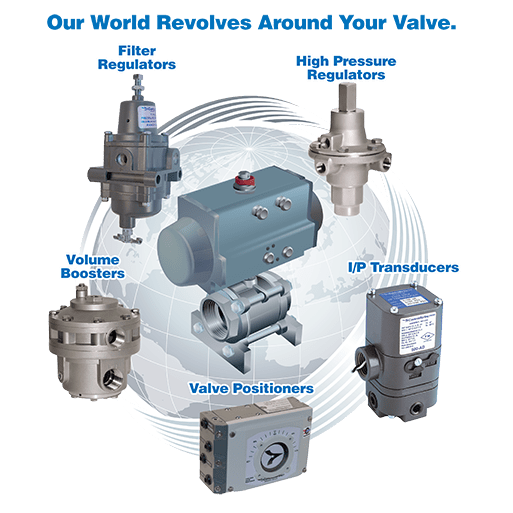Innovative Control Valves: Enhancing Accuracy and Integrity
Innovative Control Valves: Enhancing Accuracy and Integrity
Blog Article

Maximize Energy Savings and Convenience With Advanced Structure Automation Controls
In the world of modern-day design and facility management, the assimilation of advanced building automation controls stands as a crucial innovation. The merging of technology and sustainability has actually birthed a brand-new age where energy efficiency, convenience optimization, and operational streamlining are no more possible truths yet far-off aspirations. By using the power of automation, buildings can adjust, react, and evolve in manner ins which were when inconceivable. The possibility for substantial energy financial savings and improved convenience is not simply an opportunity but an assurance waiting to be met. This standard change in building administration holds the vital to unlocking a world where environmental conscientiousness and resident well-being harmoniously coexist within the walls of our frameworks.
Energy Efficiency Perks
Energy efficiency advantages can significantly decrease power usage and functional prices in structures. Energy-efficient systems, such as innovative structure automation controls, can maximize the use of resources like cooling, home heating, and lights, leading to lower energy costs over time.
Additionally, improved energy effectiveness can extend the lifespan of structure tools and systems. By running more efficiently, heating and cooling systems, lighting fixture, and various other building elements experience less damage, leading to decreased upkeep and replacement costs. In addition, energy-efficient buildings typically command higher property worths and rental prices, supplying long-term monetary advantages to owners.
In addition, energy effectiveness can enhance passenger comfort and efficiency. Properly controlled interior atmospheres with optimum lighting and thermal problems create an even more helpful and pleasurable work area, bring about boosted staff member fulfillment and efficiency. Overall, the power performance benefits related to innovative structure automation controls are multifaceted, including price savings, ecological stewardship, and occupant wellness.
Boosted Comfort Control
Enhancing convenience control in structure atmospheres needs an innovative assimilation of innovative automation systems for ideal passenger health. By making use of innovative building automation controls, centers can customize the interior atmosphere to satisfy the particular requirements and choices of occupants. control valves.
By integrating these innovative controls, buildings can not just improve convenience but additionally enhance power effectiveness by optimizing system procedures based on real occupancy and use patterns. Ultimately, focusing on occupant convenience via sophisticated automation systems leads to an extra satisfying and healthier indoor setting.
Operational Efficiency Improvements

Moreover, the implementation of real-time surveillance and analytics tools enables building operators to determine power inadequacies and functional abnormalities promptly. By constantly keeping an eye on power usage patterns and system performance metrics, adjustments can a knockout post be made in real-time to enhance power consumption and make sure peak functional effectiveness. control valves. In addition, including demand feedback techniques right into structure automation controls can even more improve functional effectiveness by dynamically readjusting power usage based on grid conditions and pricing signals
Indoor Climate Optimization
Effective indoor climate optimization is an essential facet of structure automation controls, ensuring occupants' comfort and well-being while making the most of energy cost savings. By using sophisticated sensing units and controls, developing automation systems can constantly check and readjust temperature level, humidity levels, air quality, and ventilation to develop an optimum interior atmosphere. Preserving comfortable and consistent conditions not only improves resident fulfillment however likewise boosts productivity and total health.
Indoor climate optimization additionally plays a crucial duty in power effectiveness. By fine-tuning ventilation, home heating, and air conditioning systems based upon real-time data and occupancy patterns, constructing automation controls can dramatically lower energy consumption - control valves. Executing strategies such as demand-controlled air flow and thermal zoning can help minimize power waste while guaranteeing that each location of the building obtains the required conditioning.

Lasting Setting Production
Structure automation manages not only optimize indoor environment problems for power effectiveness and owner convenience however additionally lay the structure for creating a lasting environment with strategic management of resources and systems. By integrating sophisticated building automation technologies, such as sensing units, actuators, and intelligent software, centers can keep track of and adjust power use in real-time to decrease waste and minimize their carbon impact. These systems make it possible for anticipating upkeep, determining potential concerns before they escalate and enhancing equipment efficiency to enhance long life and effectiveness.
Furthermore, lasting atmosphere production prolongs past energy management to incorporate water conservation, waste decrease, and indoor air top quality enhancement. Structure automation controls can regulate water use, find leaks, and make certain proper garbage disposal methods, adding to general sustainability efforts. Furthermore, by managing and keeping track of ventilation and filtration systems, these modern technologies improve occupant wellness and efficiency while decreasing energy usage linked with special info heating and cooling procedures.
Conclusion
To conclude, progressed building automation manages deal significant advantages in pop over here regards to energy cost savings, convenience control, operational effectiveness, indoor environment optimization, and creating a sustainable atmosphere. By carrying out these controls, structures can attain optimal performance while minimizing power intake and improving occupant comfort. It is obvious that using innovative automation technology is essential in improving building performance and producing a much more lasting future.
Power effectiveness advantages can dramatically lower power intake and functional prices in structures. On the whole, the power performance benefits associated with advanced building automation controls are multifaceted, including expense financial savings, environmental stewardship, and resident wellness.
In addition, including demand response strategies right into structure automation controls can better boost functional effectiveness by dynamically changing power usage based on grid problems and rates signals.
Structure automation manages not only maximize interior environment problems for power effectiveness and owner convenience yet additionally lay the foundation for creating a sustainable environment through tactical administration of systems and sources.In final thought, progressed structure automation manages offer considerable benefits in terms of power savings, comfort control, functional effectiveness, interior environment optimization, and creating a lasting environment.
Report this page